ISSN ONLINE(2319-8753)PRINT(2347-6710)
ISSN ONLINE(2319-8753)PRINT(2347-6710)
Vikas B. Magdum1, Vinayak R. Naik2
|
| Related article at Pubmed, Scholar Google |
Visit for more related articles at International Journal of Innovative Research in Science, Engineering and Technology
The aim of this research is to develop an in-process monitoring system for identification of the states of continuous chip, broken chip and chatter, regardless of the cutting conditions by using a proposed technique. The method proposed introduces two parameters, which are obtained by the dynamic cutting forces, to classify the states of cutting.
Keywords |
| Intelligent monitoring, cutting states, cutting force, Continuous chip, broken chip, chatter. |
I. INTRODUCTION |
| As fully automated and intelligent machine tools are highly developed and expected to be realized in the near future, which can determine the cutting states regardless of any cutting conditions, it is hence necessary to develop a methodology to identify the states of cutting. Chips are apt to entangle the workpiece or cutting tool, which causes deterioration of the finished surface and sometimes breakage of cutting tools as well as injuring the machine operator. It is therefore desired to make chips break into small pieces to realize safe and reliable machining by changing the cutting conditions during the in-process cutting. Chatter is one of the major limitations of productivity in metal cutting. It always affects surface finish, dimensional accuracy, tool life and machine life. It is then necessary to avoid the chatter occurred during the cutting process. |
| Normally, continuous chips become broken at lower cutting speeds. The chip-breaking condition is improved as the feed rate and the depth of cut are increased. The increase in nose wear causes larger contact length between the cutting tool and the workpiece, and consequently chatter occurs. |
| Extensive research efforts have been devoted so far to develop sensors and methodology for detection of chatter and identification of chip forms. The analysis of various cutting force signals, monitoring techniques, and processing methods has been presented in a recent study to identify the chip forms, especially the favourable and unfavourable chip types. It is known that the generation of chatter affects mostly the thrust force component, while the feed force component is most sensitive to chip breaking. A simplified method for recognizing the cutting states has been proposed by utilizing the dynamic components of cutting forces. Hence, the dynamic components of cutting forces were adopted to monitor and identify the chip forms and chatter in this research to increase the reliability of automated and intelligent manufacturing. [1-5] |
II. EXPERIMENTAL EQUIPMENTS AND CONDITIONS |
| The cutting tests were performed using a Panther lathe. A strain gauge dynamometer was used to measure the cutting forces. Tool geometry is shown in Table 1. The workpieces were EN 8 steel bars with a nominal diameter of Φ30mm. |
 |
| A Series of cutting experiments were carried out to obtain the cutting forces for classification of the cutting states. The cutting tests are conducted on an available lathe machine. A dynamometer has been installed onto the tool post of the machine. The major cutting conditions are summarized in Table 1. The dynamic cutting force components detected by the dynamometer are prior to represent graphically. The other cutting conditions are summarized in Table 2. |
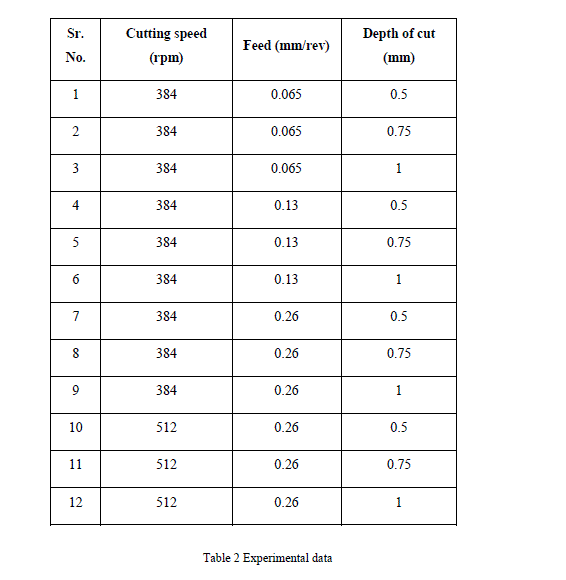 |
| A lathe was utilized, fitted with a HSS tool. The other parameters were selected in order to obtain prompt treatment and to identify the most appropriate method to analyse the forces. One single sample was prepared and fixed on the Dynamometer for the force acquisitions as shown in Fig.1. |
| The following experimental procedures are adopted to obtain the relation between the cutting force and the states of chips and chatter. |
| Start cutting with a tool and measure the cutting force. Measure two dynamic cutting forces, Ft and Ff at varied feed rates and depth of cut; and determine the dynamic cutting forces for the states of chips and chatter. |
| Observe the cutting force components of the cutting tests when the cutting state is to be monitored. Identify the states of chips and chatter by the experimentally obtained values of parameters. |
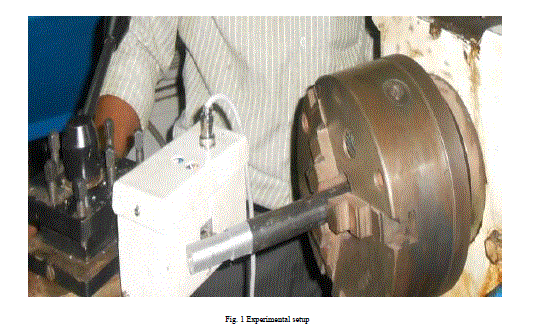 |
| The dynamic cutting force signals of cutting tests were observed under the major cutting conditions mentioned above. Observation Table 2shows the different cutting states. The figure’s also shows some typical examples of the continuous chips and the broken chips obtained, and their corresponding time records of the dynamic components of cutting forces. When the chips are continuous, the dynamic components of cutting forces are small in amplitude. On the other hand, the dynamic components of cutting forces become larger when the chips are broken, especially at the dynamic feed force component. Hence, the values of cutting forces of broken chip formation are larger than those of the continuous chip formation. |
| When the chatter occurs, the dynamic thrust force is relatively large in amplitude, among the two force components. The dynamic thrust force and dynamic feed force of the chatter are then larger than those of the continuous chip formation. |
III. OBSERVATION TABLE |
| Table 3 show the experimentally obtained cutting forces Ft and Ff respectively. The values of parameters Ft and Ff are relatively small when the chips are continuous as compared to others, as shown for experiment no. 1, 2, 3 and 4. It is understood that the amplitudes of the dynamic cutting force components are of less difference. While the chips are broken, the values of parameter Ft and Ff are large as shown for experiment no. 5, 6, 7 and the feed force component is most sensitive to chip breaking among the force components. Similarly the values of parameters Ft and Ff are relatively very large when the chatter appears as shown for experiment no. 8, 9, 10, 11, and 12. It is understood that the dynamic component of thrust force is larger than those of feed force. |
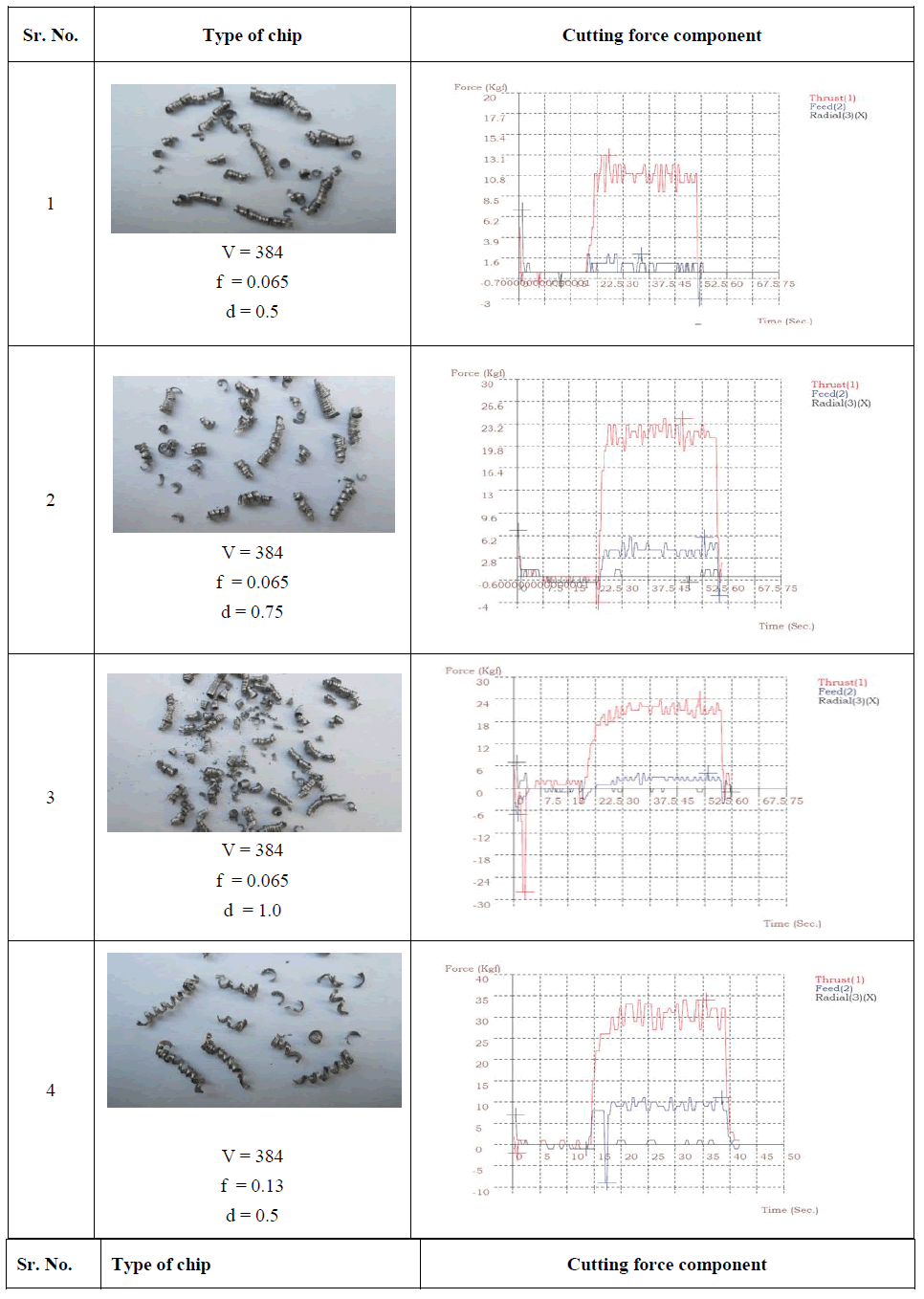 |
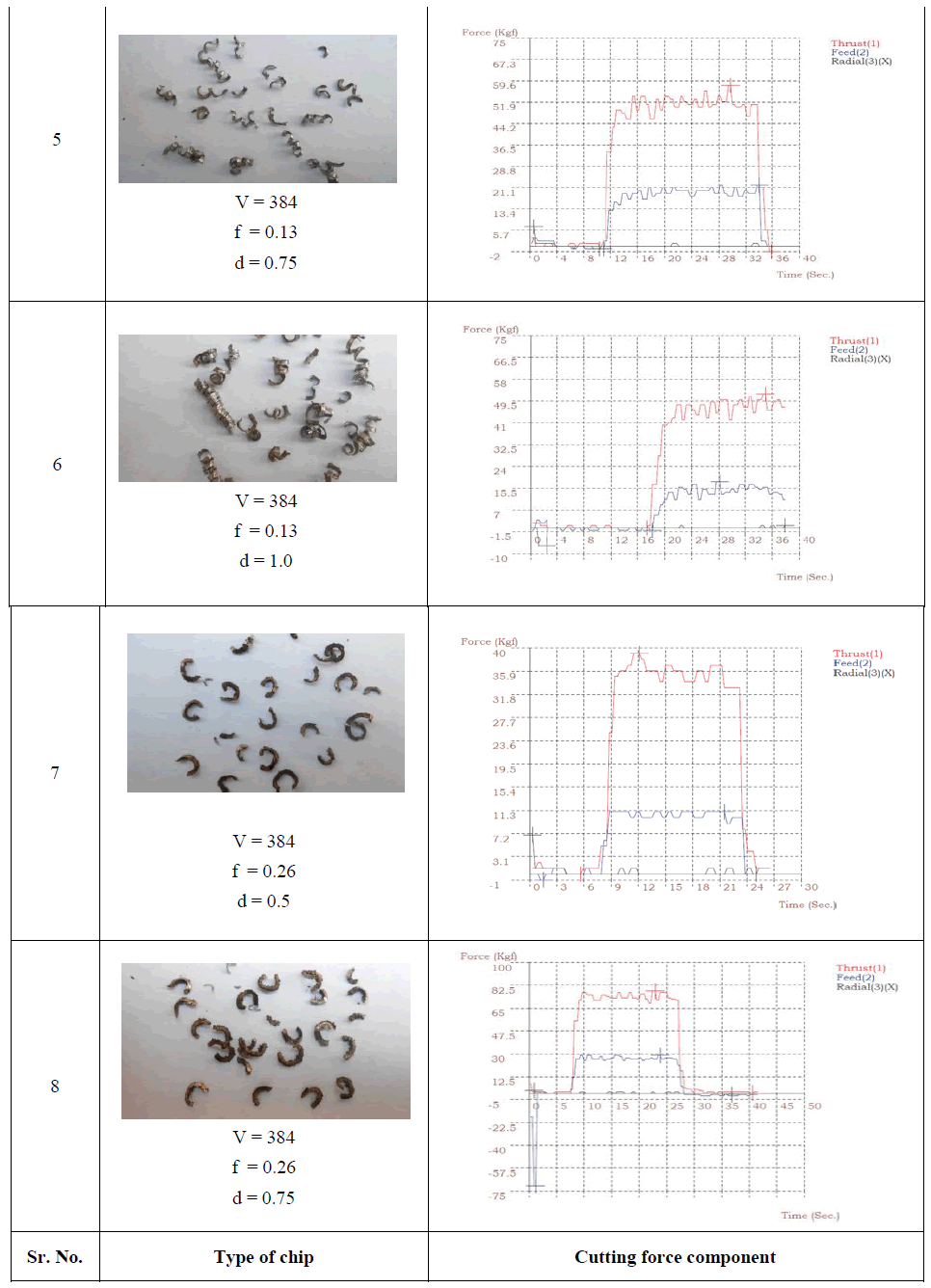 |
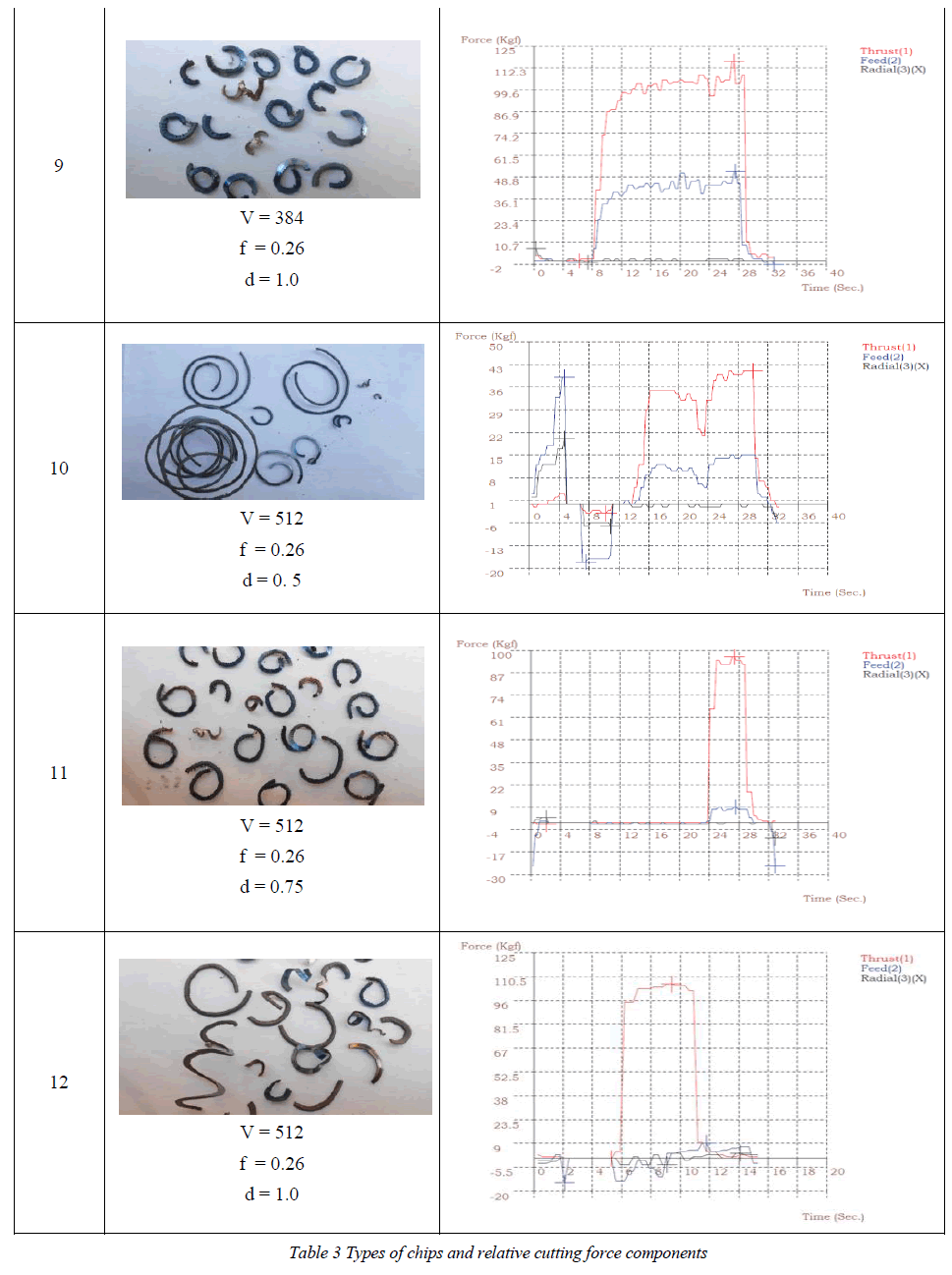 |
IV. CONCLUSION |
| The cutting states can be simply identified during the in-process cutting regardless of the cutting conditions by mapping the experimentally obtained values of parameters Ft and Ff. It is then concluded that (1) the chips are identified to be broken when the parameter values of Ft and Ff are less, (2) the chatter is identified when the parameter values of Ft and Ff exceed and (3) the chips are identified to be continuous when the parameter values of Ft and Ff are less as compared to broken chips. |
References |
|